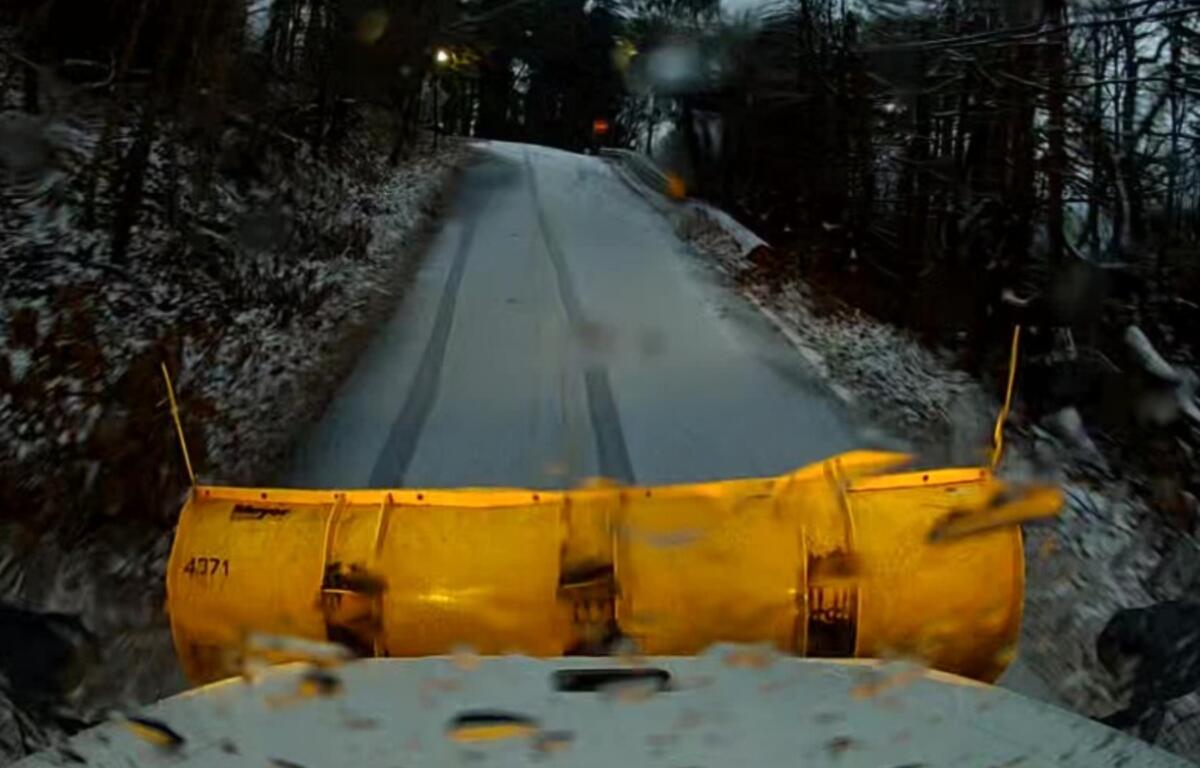ASHEVILLE, N.C. (828newsNOW) — A storm that brought snow and ice to the Asheville area Friday has resulted in hazardous driving conditions across the region.
By sundown, many roads were becoming slick. People are urged to stay home unless absolutely necessary.
By 8 p.m., the North Carolina Department of Transportation was reporting five incidents on main roads and two on secondary roads. Two of those incidents are in Western North Carolina.
According to the NCDOT website, Interstate 26 is closed in Madison County near the Tennessee line because of a vehicle crash. The road is expected to reopen by 8 a.m. Saturday.
U.S. 19 (Soco Road) is closed in both directions near the Blue Ridge Parkway north of Sylva in Jackson County. The road is expected to reopen by 9 p.m. Friday.
According to the NDCOT website, many sections of interstates, United States and North Carolina routes and secondary roads in Buncombe County are partially covered by snow and ice.
Asheville Public Works crews are reporting snowy conditions that have turned to an icy/wintery mix. Roads are slippery in places, and conditions continue to deteriorate.
Numerous social media posts are reporting black ice on secondary roads in Enka/Candler, Arden and Leicester as well as on interstates 40 and 26.
One social media post warned of slick roads from I-40 exit 44 to Haywood Regional. Another said Leicester Highway and Mount Carmel Road are “nasty.”
Hendersonville officials are also reporting icy roads.

As the winter storm continues, visitor centers and most roads in Great Smoky Mountains National Park remain closed.
Closures include:
- Foothills Parkway
- Laurel Creek Road
- Little River Road
- Cades Cove Loop Road
- Cherokee Orchard Road
- US 441/Newfound Gap Road
- Lakeview Drive
- Cosby Entrance Road
- Elkmont Road
- Greenbrier Road
- Wear Cove Entrance Road
- Gatlinburg Bypass
During the winter, Great Smoky Mountains National Park closes some roadways for visitor safety. Other roads are subject to temporary closures during winter weather events because of unsafe conditions (high winds, ice, snow). Even though conditions may seem safe outside the park, higher-elevation roads often include steep grades and sharp curves that quickly become dangerous in wintery conditions. At the park’s tallest peaks, temperatures drop swiftly and precipitation is much more frequent and heavier.
Visit go.nps.gov/SmokiesConditions to check the status of park roads.


